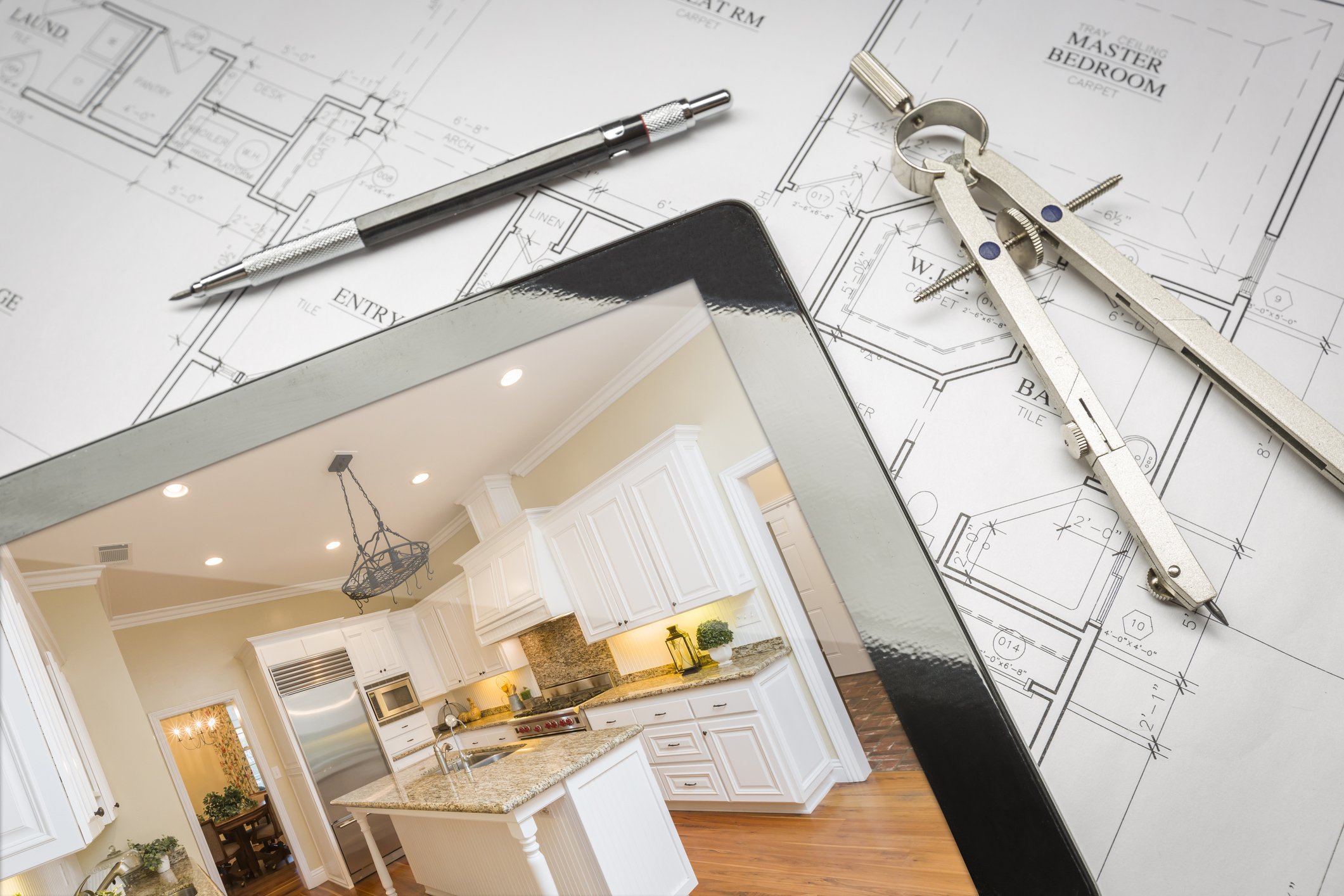Custom home building differs from tract home building because most everything about the house is designed by you, from the outside in. A tract builder, on the other hand, may allow a few changes to the house at most. Working with a custom builder requires much more input and involvement from you, but in the end, you’ll have the home you always wanted.
The Design Process
Custom builders listen carefully to what the clients want from the home. Besides the basics like bedroom and bathroom counts and living areas, you may want features unique to your home. The core of custom home building is to build a home based on the wishes and requirements of the client.
Some custom home builders have their own designers and architects on staff, while others work with the professionals that their clients choose. In either case, the builder’s input is important to the design process.
The economies of scale apply to construction costs, and a home designed with those in mind will have lower hard costs, which are the construction costs alone. They do not include land or overhead expenses. The design team and the builder may also suggest features that would help the livability or salability of the home that you hadn’t considered.
Builders and the Approval Process
Your builder has to work with the city or local jurisdiction to design the home to meet the zoning requirements and the building codes that apply. Many times the jurisdiction has a square footage range for individual neighborhoods and exterior design characteristics that restrict the size and types of homes. Once you’ve finalized the design and the planning department approved it, the builder will apply for a building permit to move forward with construction.

Project Management
The process of building a home depends on a step-wise progression of task completion. Certain steps have to be completed before the next one can begin. The builder has to ensure that each step occurs as scheduled. If there are delays, the entire job may fall behind.
The local jurisdiction has to inspect and approve the framing and wiring for your home, as well as issuing a final occupancy certificate. Without it, no one can live in the home. It’s also normal in custom home building for the builder to meet with the clients to show them the progress of their homes. During these inspections, the builder typically explains the engineering and infrastructure of the home to help you understand the systems behind the drywall.
The Building Process
Although a few tract home builders use their own employees to build homes, generally the tract and custom home builders rely on subcontractors. Some of the contractors involved in custom home building require licenses dependent on professional skills and testing, like the electricians, plumbers and HVAC professionals.
Other contractors may need licenses, like framers, painters, drywallers and concrete specialists. Custom home building requires a general contractor’s license, which someone earns by showing experience, education and mastery. Most areas require passing a rigorous exam and having insurance and bonding.
As the contractor, tract and custom builders have the fiduciary responsibility for the project. They pay every entity involved in the project for the work performed or the fees due. They have to hire the subcontractors and are ultimately responsible for their performance.
Bottom Line
When you’re involved in custom home building, you’ll be making a lot of decisions about design, function and features. At Alair Homes, we’ll help you make educated decisions about each aspect of your home, including getting it permitted by the local jurisdiction and carefully built by local experts. If you’re ready to build, contact us to schedule a complimentary, no obligation consultation.
